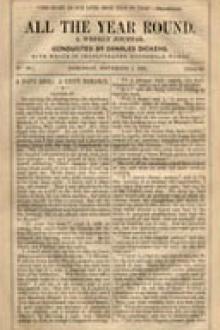Struggles and Triumphs - P. T. Barnum (top 20 books to read txt) 📗

- Author: P. T. Barnum
Book online «Struggles and Triumphs - P. T. Barnum (top 20 books to read txt) 📗». Author P. T. Barnum
Lindencroft was sold July 1, 1867, and we immediately removed for a summer’s sojourn to a small farmhouse adjoining Seaside Park. During the hot days of the next three months we found the delightful sea-breeze so bracing and refreshing that the season passed like a happy dream, and we resolved that our future summers should be spent on the very shore of Long Island Sound. I did not, however, perfect my arrangements in time to prepare my own summer residence for the ensuing season; and during the hot months of 1868 we resided in a new and very pretty house I had just completed on State Street, in Bridgeport, and which I subsequently sold, as I intended doing when I built it. But, towards the end of the summer, I added by purchase to the Mallett farm, adjoining Seaside Park, a large and beautiful hickory grove, which seemed to be all that was needed to make the site exactly what I desired for a summer residence. It will be remembered that I bought this Mallett farm, not for myself, but so that a portion of it could be devoted to the public park; and, a generous slice having been thus given away, there were several acres remaining which were admirably adapted to one or more residences, and the purchase of the grove property made the location nearly perfect.
But there was a vast deal to do in grading and preparing the ground, in opening new streets and avenues as approaches to the property, and in setting out trees near the proposed site of the house; so that ground was not broken for the foundation till October. I planned a house which should combine the greatest convenience with the highest comfort, keeping in mind always that houses are made to live in as well as to look at, and to be “homes” rather than mere residences. So the house was made to include abundant room for guests, with dressing-rooms and baths to every chamber; water from the city throughout the premises; gas, manufactured on my own ground; and that greatest of all comforts, a semidetached kitchen, so that the smell as well as the secrets of the cuisine might be confined to its own locality. The stables and gardens were located far from the mansion, on the opposite side of one of the newly opened avenues, so that in the immediate vicinity of the house, on either side and before both fronts, stretched large lawns, broken only by the grove, single shade-trees, rock-work, walks, flowerbeds and drives. The whole scheme as planned was faithfully carried out in less than eight months. The first foundation stone was laid in October, 1868; and we moved into the completed house in June following, in 1869.
It required a regiment of faithful laborers and mechanics, and a very considerable expenditure of money, to accomplish so much in so short a space of time. Those who saw a comparatively barren waste thus suddenly converted to a blooming garden, and, by the successful transplanting and judicious placing of very large and full-grown forest trees, made to seem like a long-settled place, considered the creation of my new summer home almost a work of magic; but there is no magic when determination and dollars combine to achieve a work. When we moved into this new residence, we formally christened the place “Waldemere,”—literally, but not so euphoniously, “Waldammeer,” “Woods-by-the-Sea,”—for I preferred to give this native child of my own conception an American name of my own creation.
On the same estate, and fronting the new avenue I opened between my own property and the public park, I built at the same time two beautiful cottages, one of which is known as the “Petrel’s Nest,” and the other, occupied by my eldest daughter, Mrs. Thompson, and my youngest daughter, Mrs. Seeley, as a summer residence, is called “Wavewood.” From the east front of Waldemere, across the sloping lawn, and through the reaches of the grove, these cottages are in sight, and before the three residences stretches the broad Sound, with nothing to cut off the view, and nothing intervening but the western portion of Seaside Park. Seaside and sea-breezes, however, do not include the sum of rural felicities in summer; and so I still keep possession of the fine farm which, years ago, was the scene of the elephant-plowing feats. On this property, which is in charge of a judicious farmer, I have some very fine imported stock, including several head of the celebrated white-blanket “Dutch cattle,” which excite the curiosity and attract the attention of all who see them. These cattle





Comments (0)